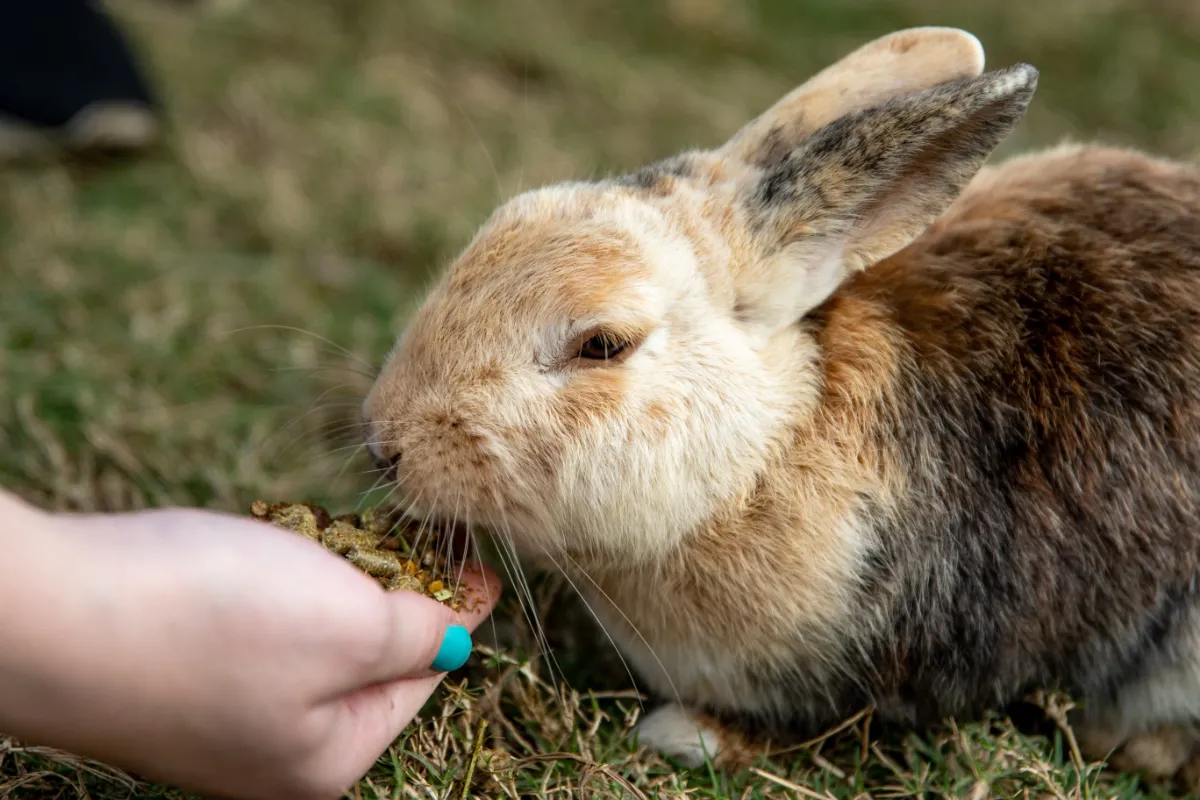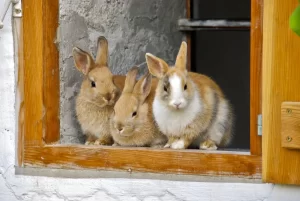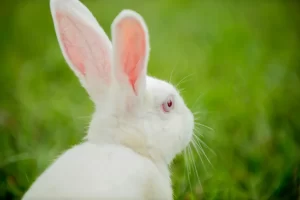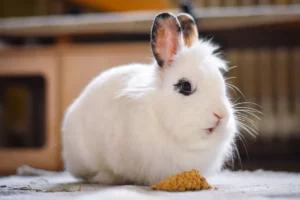Do you ever wonder why rabbits pull out their fur?
It may seem strange, but there are actually several reasons behind this behavior.
From medical issues to stress and anxiety, rabbits may resort to fur pulling as a way to cope.
In this article, we will delve into the various causes of fur pulling in rabbits, as well as provide helpful tips on prevention and treatment.
So, if you want to understand and assist these furry creatures, keep reading!
In This Article
- 1 Key Takeaways
- 2 Medical Reasons for Fur Pulling
- 3 Behavioral Causes of Fur Pulling
- 4 Stress and Anxiety as Triggers for Fur Pulling
- 5 Seasonal Fur Loss in Rabbits
- 6 Parasites and Infestations Leading to Fur Pulling
- 7 How to Prevent and Treat Fur Pulling in Rabbits
- 8 Frequently Asked Questions
- 8.1 Can Fur Pulling in Rabbits Be a Sign of a More Serious Medical Condition?
- 8.2 Are There Certain Breeds of Rabbits That Are More Prone to Fur Pulling?
- 8.3 Can Rabbits Pull Out Their Fur Due to Boredom or Lack of Mental Stimulation?
- 8.4 Is Fur Pulling in Rabbits More Common in Certain Seasons?
- 8.5 Are There Any Products or Treatments Available to Help Alleviate Fur Pulling in Rabbits?
- 9 Conclusion
Key Takeaways
- Fur pulling in rabbits can be caused by medical reasons such as hormonal imbalances, skin infections, allergies, and parasites.
- Genetic predisposition and environmental factors like lack of stimulation and stressful changes can also contribute to fur pulling.
- Stress and anxiety can trigger fur pulling in rabbits, so creating a calm and soothing environment is important.
- Understanding the seasonal shedding patterns of rabbits and addressing parasites promptly can help prevent fur pulling.
Medical Reasons for Fur Pulling
You should consult a veterinarian to determine if there’s a medical reason for your rabbit’s fur pulling. Psychological factors and hormonal imbalances can contribute to this behavior in rabbits.
Psychological factors such as stress, anxiety, or boredom can lead to excessive fur pulling. Rabbits may pull out their fur as a way to cope with these negative emotions.
Hormonal imbalances, specifically an overproduction of sex hormones, can also cause rabbits to engage in fur pulling. This is more common in intact female rabbits who aren’t spayed.
A veterinarian can conduct a thorough examination of your rabbit and perform any necessary tests to identify any underlying medical conditions that may be causing the fur pulling. They can then provide appropriate treatment or behavioral interventions to address the issue.
Behavioral Causes of Fur Pulling
There are several behavioral factors that can contribute to fur pulling in rabbits, such as stress or boredom. Understanding these factors can help you provide better care for your furry friend.
Here are some important points to consider:
- Genetic Predisposition: Some rabbits may have a higher likelihood of developing fur pulling behaviors due to their genetic makeup. Breeds with a history of fur pulling may be more susceptible.
- Environmental Factors: Rabbits may pull their fur if they aren’t provided with a stimulating or comfortable environment. Lack of exercise, social interaction, or a suitable living space can contribute to this behavior.
- Stress: Rabbits are sensitive animals and can become stressed easily. Changes in their environment, such as moving to a new home or the presence of loud noises, can trigger fur pulling.
- Boredom: Like humans, rabbits can get bored. Without enough mental and physical stimulation, they may resort to fur pulling as a way to alleviate their boredom.
Stress and Anxiety as Triggers for Fur Pulling
Stress and anxiety can be triggers for fur pulling in rabbits, so it’s important to create a calm and soothing environment for your furry friend. Rabbits have a sensitive nature and are prone to experiencing stress from various environmental factors. Poor living conditions, such as overcrowding or loud noises, can contribute to their anxiety levels. Additionally, changes in routine, diet, or even the presence of predators can also cause stress and trigger fur pulling behaviors.
Furthermore, genetic predisposition plays a role in fur pulling in rabbits. Certain breeds may be more prone to developing this behavior due to their genetic makeup. It’s important to consider the rabbit’s lineage and if there’s a history of fur pulling in their genetic line. By understanding these genetic factors, you can take additional measures to ensure a stress-free environment for your rabbit and reduce the likelihood of fur pulling.
Seasonal Fur Loss in Rabbits
The seasonal fur loss in rabbits can be influenced by factors such as changes in temperature and daylight. As the seasons change, rabbits undergo a natural shedding process to adapt to their environment. This shedding is essential for maintaining the health and quality of their fur. Environmental factors play a significant role in fur loss among rabbits. Here are some key points to consider:
- Natural shedding patterns: Rabbits have specific shedding cycles throughout the year. They shed more during the spring and fall seasons as they prepare for temperature changes.
- Temperature: Fluctuations in temperature trigger rabbits to shed their fur. Warmer weather prompts them to shed their dense winter coat, while cooler weather prompts the growth of a thicker coat for insulation.
- Daylight: The length of daylight affects rabbits’ hormone levels, which regulate their fur growth and shedding. Longer daylight hours in spring stimulate shedding, while shorter daylight hours in fall signal the growth of a thicker coat.
- Stress: Stressful situations, such as changes in their environment or diet, can also contribute to excessive fur loss in rabbits. It’s essential to provide a calm and stable environment to minimize stress-related shedding.
Understanding these natural shedding patterns and environmental factors can help us better care for rabbits and ensure their overall well-being.
Parasites and Infestations Leading to Fur Pulling
You can prevent fur pulling in rabbits by regularly checking for parasites and treating any infestations promptly. One common cause of fur pulling in rabbits is parasitic mites, such as the Cheyletiella parasitovorax mite. These mites infest the fur and skin of rabbits, causing intense itching and discomfort.
As a result, rabbits may start pulling out their fur in an attempt to relieve the itching. It’s important to check your rabbit’s fur regularly for any signs of mites, such as redness, flaky skin, or small white particles resembling dandruff. If you notice any of these signs, it’s crucial to consult a veterinarian for proper diagnosis and treatment.
Prompt treatment can help prevent allergic reactions and further damage to the rabbit’s fur and skin.
How to Prevent and Treat Fur Pulling in Rabbits
To effectively prevent and treat fur pulling in rabbits, it’s important to regularly groom them and provide a balanced diet. Fur pulling, also known as barbering, is a common behavioral issue in rabbits that can be caused by various factors. Understanding the underlying causes is crucial in determining the most effective treatment options.
Here are some key strategies to consider:
- Provide a spacious and enriched environment to reduce stress and boredom.
- Ensure that your rabbit’s diet is well-balanced, including sufficient fiber and a variety of vegetables.
- Regularly groom your rabbit to remove loose fur and prevent matting.
- If necessary, consult a veterinarian to rule out any underlying medical conditions and to discuss potential medications or supplements.
Frequently Asked Questions
Can Fur Pulling in Rabbits Be a Sign of a More Serious Medical Condition?
Fur pulling in rabbits can indicate a more serious medical condition. Psychological causes, such as stress or boredom, can lead to this behavior. Prevent and manage fur pulling by providing a stimulating environment and addressing any underlying health issues.
Are There Certain Breeds of Rabbits That Are More Prone to Fur Pulling?
Are certain rabbit breeds more prone to fur pulling? Yes, certain breeds, such as the Lionhead and Rex, have a higher incidence of fur pulling due to genetic factors.
Can Rabbits Pull Out Their Fur Due to Boredom or Lack of Mental Stimulation?
Rabbits need companionship to thrive, as they are social animals. Lack of mental stimulation and boredom can lead to fur pulling. Environmental enrichment, such as providing toys and activities, can help prevent this behavior.
Is Fur Pulling in Rabbits More Common in Certain Seasons?
During certain seasons, rabbits may experience an increase in fur pulling. This behavior can be caused by various factors, such as hormonal changes or allergies. To prevent or manage fur pulling, it is crucial to provide a stimulating environment and seek veterinary advice if necessary.
Are There Any Products or Treatments Available to Help Alleviate Fur Pulling in Rabbits?
There are several natural remedies and behavioral techniques available to help alleviate fur pulling in rabbits. These include providing a balanced diet, enrichment activities, regular grooming, and addressing any underlying medical or psychological issues.
Conclusion
In conclusion, understanding the reasons behind a rabbit’s fur pulling behavior is crucial for their well-being.
Medical conditions, behavioral causes, stress, seasonal fur loss, and parasites can all contribute to this issue.
By addressing these underlying factors and implementing preventive measures, such as proper nutrition and environmental enrichment, rabbit owners can help alleviate fur pulling and ensure the overall health and happiness of their furry companions.
Remember, a rabbit’s fur is more than just a coat—it reflects their physical and emotional state.





